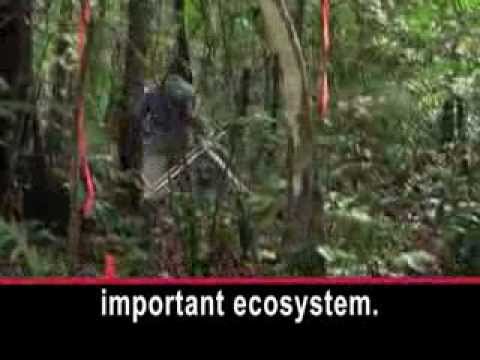Biologists Flock to Panama to a Century-Old Tropical Research Institute
 |
From voaspecialenglish.com | facebook.com/voalearningenglish
Light barely reaches the ground of the dense rain forest on Barro Colorado Island in Panama. In the early morning hours, two researchers are looking for monkeys. Anthropology professor Stephanie Ramirez is an expert on spider monkeys.
STEPHANIE RAMIREZ: "... I'm interested in is how fruit affects their reproductive potential, because spider monkeys mostly consume fruit. And we've noticed that during times when fruit is not abundant or available they can't conceive."
There are only thirty-nine spider monkey on the island. Eight have radio transmitters around their necks.
Stephanie Ramirez and Lauren Mills are using a radio receiver to follow the movement of the animals. But they are not alone. Tony Coates is with the Smithsonian Tropical Research Institute in Panama.
TONY COATES: "The Smithsonian Tropical Research Institute here in Panama is something of a mecca for all biologists in the world who are interested in the tropics and in tropical biology."
The Institute was started there 100 years ago. Abby Bruning came from South Dakota to study ants.
ABBY BRUNING: "We manipulate their diets. So either they will be on a high carbohydrate or a high protein diet and at the end we run analyses to see how well they fight off infection, death rates and things like that."
Bruning studies a single species of ant. High above the ants, pink flowered almendro trees brighten the forest's canopy. Worker ants carry the flowers to their home.
An Azteca ant colony is a big structure that takes more than a year to build. The ants they shelter are the favorite meal of ant eaters.
Scientists say there are about 100 kinds of mammals and nearly as many reptiles on the island.
Tony Coates says tropical areas are a sea of life.
TONY COATES: "The vast majority of all species of plants and animals live in the tropics. The vast majority of all the technical knowhow, political will, education and financing is in the temperate world. How to get those two realms together is one of the great issues facing global conservation."
The headquarters of the Smithsonian Tropical Research Institute is in Panama City. Its library on tropical biology is considered one of the world's best.
TONY COATES: "It follows the same system as the Library of Congress."
In nearby Culebra, a Smithsonian educational center is open to the public.
Thousands of children visit each year.
TONY COATES: "That is our biggest educational contribution to our host country, Panama."
The Smithsonian Tropical Research Institute in Panama is celebrating its hundredth year. It is also launching a new research center in Gamboa.
Private donors want the institute to study subjects of growing concern today. These include how forest's control erosion and capture carbon from the air. They also want to know how to protect this important ecosystem.
|




